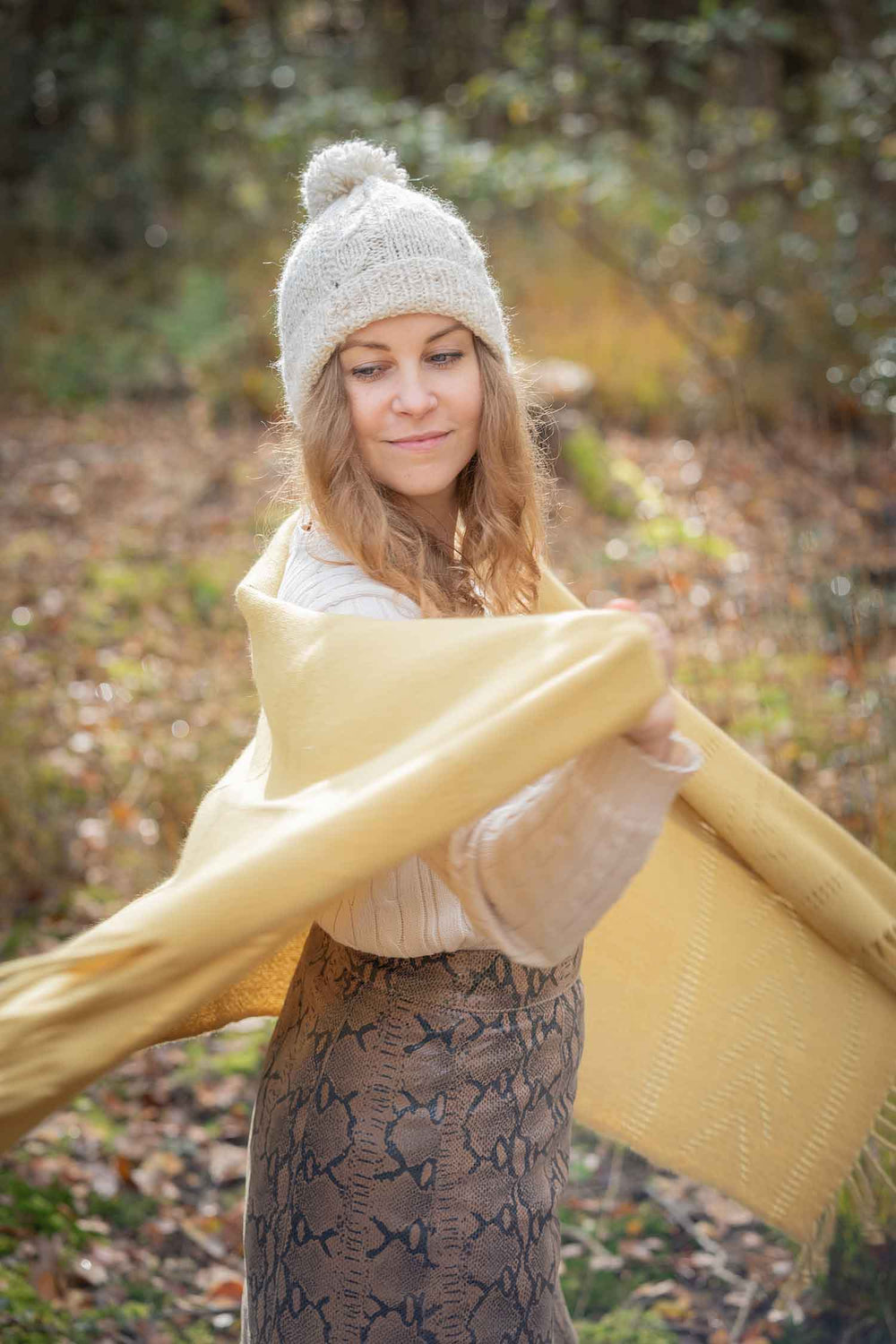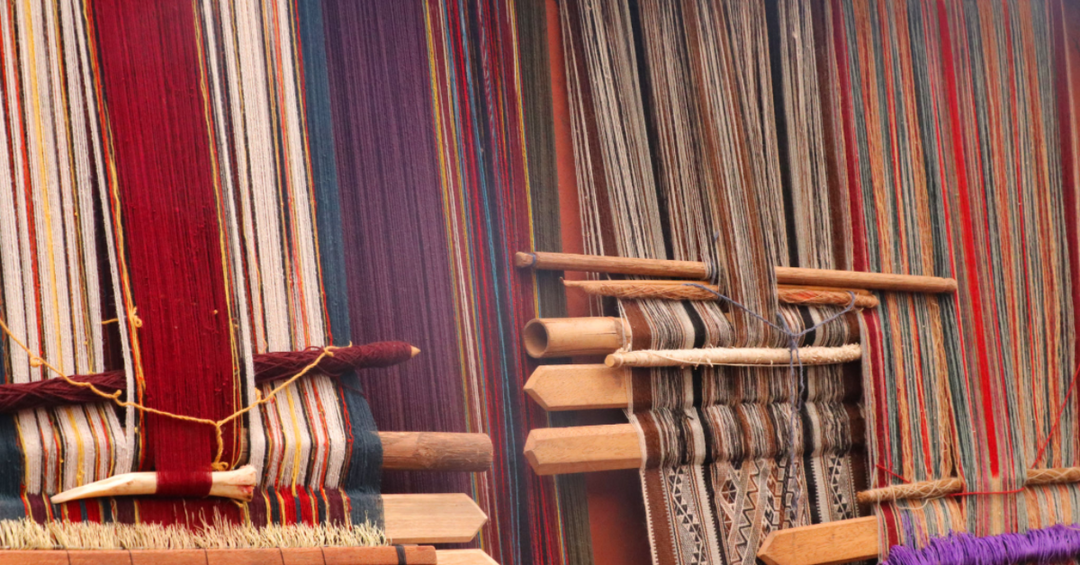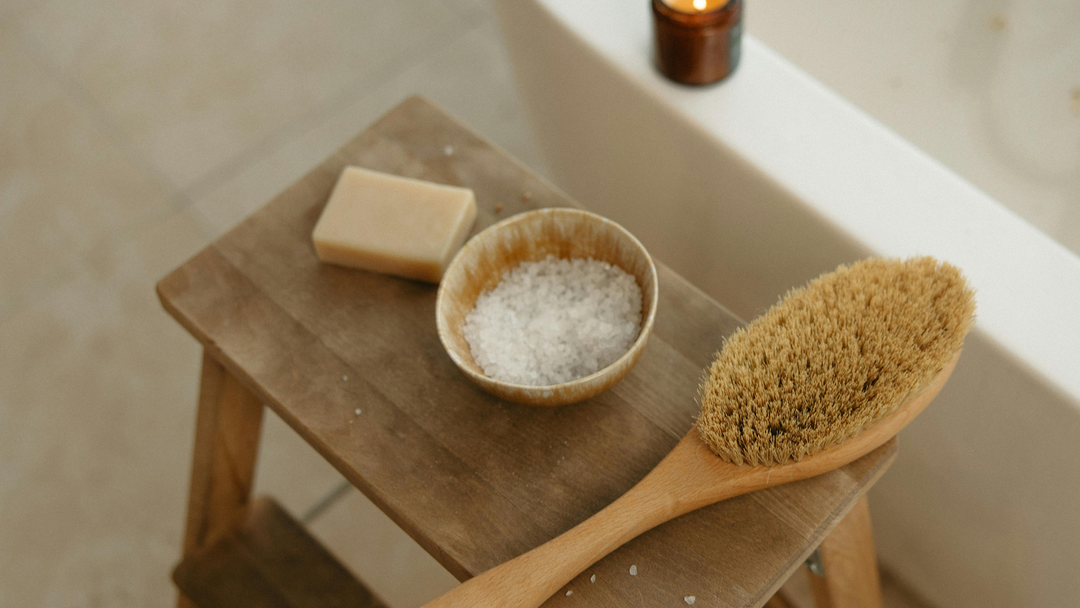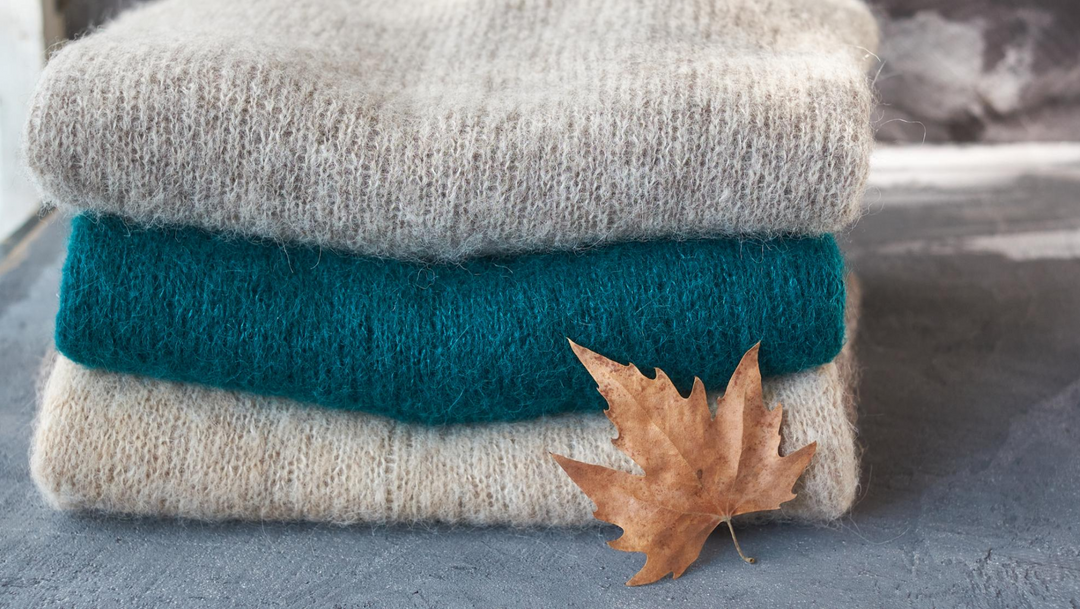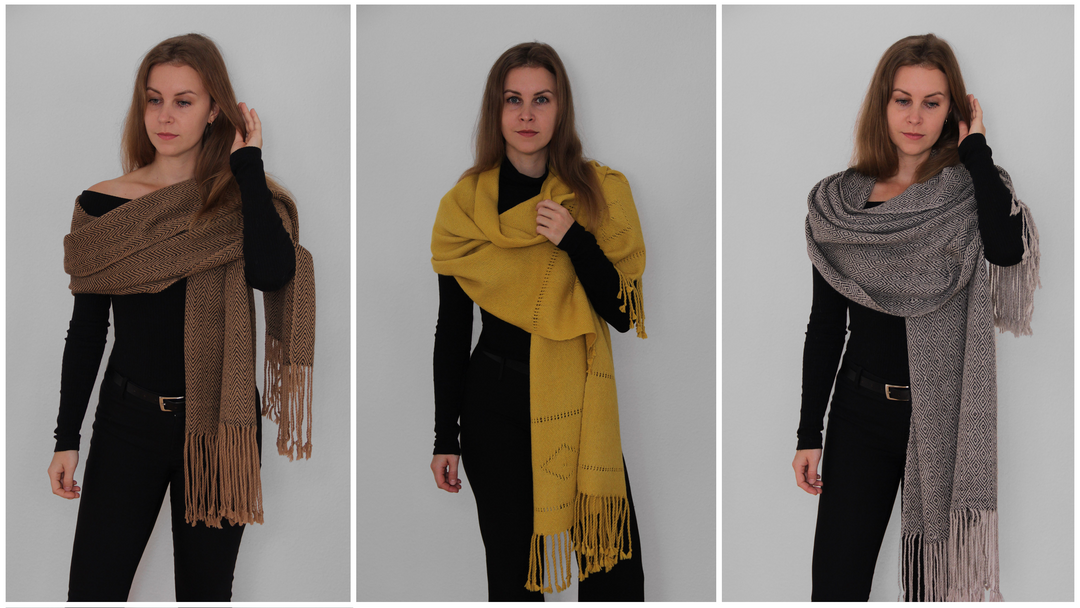Elegance, comfort and timelessness-these words best sum up the essence of high-quality wool and alpaca clothing. But even the finest textiles are not immune to the ever-present problem of pilling. So what can you do to maintain the condition of your exquisite pieces?
Table of contents
The aesthetic of perfection
Before we delve into the details of pilling removal and prevention, it's important to appreciate the aesthetics that make wool and alpaca an essential part of your wardrobe. In addition to their supple texture and warming properties, these materials offer a high level of durability that just calls for quality care. After all, it's attention to detail that sets our selection of alpaca products and high-quality wool apart from the crowd.
What is pilling and why does it occur?

Pilling occurs when short or loose fibres collect on the surface of the material. These fibres tend to condense into small nodules called "pills". Usually, pilling is triggered by friction, such as when wearing or washing clothes.
Factors that promote pilling
- Material texture: While natural fibres such as alpaca wool are generally less prone to pilling, combining them with synthetic fibres can exacerbate the problem.
- Mechanical stress: Friction is one of the main reasons for pilling. For example, friction from the arms on the side of a jumper often causes pilling.
- Washing methods: Too much spinning, high temperatures or the use of aggressive detergents can encourage pilling.
Care of Alpaca Wool: The Golden Standard
The high quality of alpaca wool requires an equally high quality of care. Here, the intensity of care is less important than the care and attention you give to your garments. By following simple care instructions, you can prolong the life of your favourite pieces and preserve their beauty.
How to remove pilling?
Removing pilling is less of a chore and more of an art form. With the right tools and techniques, you can restore your garments to their original look.
- Lint razor: An effective tool for removing pills is the lint razor. Gently glide over the surface of the material to remove the pills.
- Manual work: Pills can also be removed manually with a special comb for wool or alpaca. Gently drag the comb across the surface to loosen the pills.
- Home remedies: You can find various tricks for removing pilling on the internet, but be careful. Many of these methods are not suitable for fine fabrics such as wool or alpaca.
Learn more about how to de-fuzz wool jumpers and remove wool pilling on our blog.
Pilling prevention: prevention is the best medicine

While removing pilling may be necessary, the best strategy is always prevention. With a few simple practices, you can minimise the occurrence of pilling, ensuring the beauty and longevity of your alpaca and wool garments
Tips for the right wash
The way you wash your clothes plays a crucial role in preventing pilling. High-quality textiles such as alpaca wool deserve the same care you give them when you wear them.
- Gentle detergent: Use a mild detergent specially formulated for wool and delicate fibres.
- Hand wash preferred: A gentle hand wash programme or hand wash can help minimise the mechanical friction that causes pilling.
- Less is more: Do not overload the washing machine. This reduces friction between garments and minimises the risk of pilling.
The right storage a place for each jewellery piece
The way you store your clothes can also make a difference. For some tips on proper storage, check out our specialised blogs on alpaca wool properties and care of alpaca wool.
- Use hangers: Hang jumpers and jackets on high-quality hangers to maintain their shape.
- Store in a cool, dry room: Humidity can break down fibres and promote pilling. A cool, dry room is ideal for storage.
Material knowledge: choose quality over quantity
Invest in clothes that are made from high-quality materials. The difference in fibre length and quality can be crucial when it comes to preventing pilling. Our selection of alpaca products and high-quality wool focuses on quality as a core characteristic.
For those who want to know more
Our blogs offer more in-depth information on topics such as alpaca wool vs. other natural products and our quality. If you want to get comprehensive information, you will certainly find it here
Specialised care products: A small luxury with a big impact

Treating your fine alpaca and wool garments with specialised care products can be crucial in preventing pilling and other minor inconveniences. These products are an investment in the longevity of your garments and offer additional ways to maintain the condition of your prized pieces.
- Wool shampoos and conditioners: These products are designed to protect and revitalise the fibres in your clothes.
- Antistatic Sprays: These can help to minimise the build-up of lint and pilling.
Our care recommendations for alpaca wool will give you detailed instructions on how to use these specialised products.
An expert look: When all else fails
There are times when pilling occurs despite all precautions. For these cases, the advice of an expert can be invaluable. Here we recommend our own in-depth guides and FAQs, which can be found on the blogs about alpaca clothing and care of alpaca wool. Often, an informed look at the problem can reveal new ways to solve it.
Final thoughts
The look and feel of your clothes are a reflection of your personal style and appreciation for quality. Removing and preventing pilling is not only a matter of aesthetics, but also a sign of respect for the craftsmen and materials that make these exquisite pieces possible.
In our extensive alpaca shop, you will find a variety of products that meet your high standards. Our textiles are more than just garments; they are experiences that touch your senses and enrich your daily life.
Frequently asked questions about removing and preventing pilling in wool and alpaca
Well-maintained alpaca and wool garments can provide a lifetime of enjoyment. Therefore, it is only natural that questions arise about the care and maintenance of these luxurious textiles. Below are answers to some of the most common questions we receive
Why does alpaca wool tend to pill less than other wool types?
The quality of alpaca fibres is higher than other types of wool on several levels. Their texture is smoother and less prone to friction, minimising pilling. Read more about the advantages of alpaca wool over other natural products.
What is the best way to prevent pilling?
Prevention starts with proper storage and washing of your alpaca and wool garments. Use specialised care products and follow the care recommendations for alpaca wool for best results.
Are there any tools specifically designed for removing pilling?
Yes, tools such as wool combs or lint shavers are specifically designed to effectively remove pilling. An informed look at the problem can also help you choose the right tools. Visit our alpaka shop for recommended products.
Are specialised care products really necessary?
While it is possible to care for alpaca and wool garments without specialised products, they provide an extra layer of protection and can extend the life of your garments. It's a worthwhile investment if you value the quality and longevity of your textiles.
What should I do if I find pilling despite taking precautions?
If all other methods fail, professional help can be sought. An informed look at the problem can often reveal new ways to solve it. Our blogs provide detailed information and advice on dealing with pilling and other minor inconveniences.




